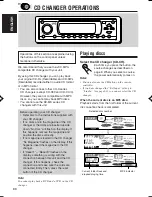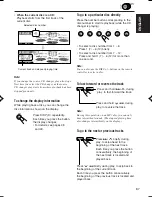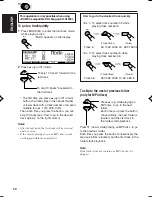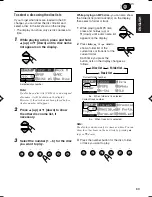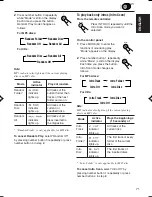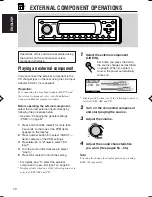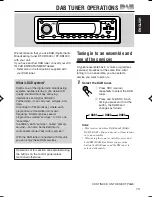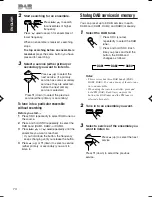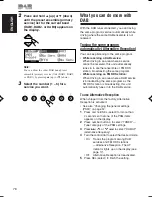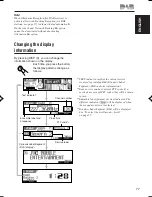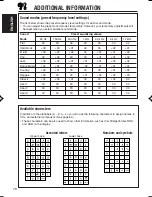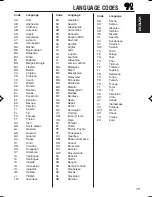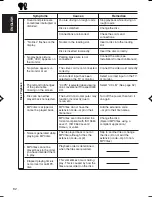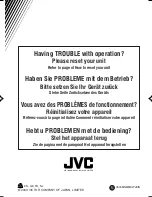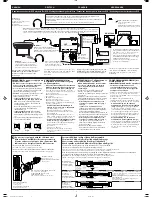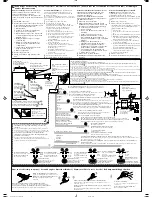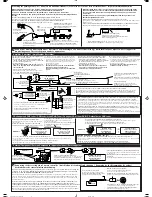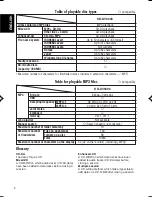
80
ENGLISH
4:3 Letterbox Screen
This is one method for displaying a wide screen
picture on a conventional sized (4:3) TV. While
viewing a wide screen picture, the black bars
appear on the top and the bottom of the screen.
4:3 Pan-Scan Screen
This is one method for displaying a wide screen
picture on a conventional sized (4:3) TV. While
viewing a wide screen picture, the left and right
edges of the pictures will not be shown on the
screen.
Dolby Digital
Dolby Digital is a technology developed by Dolby
Laboratories that reproduces multi-channel
cinema sound in systems equipped with a Dolby
Digital multi-channel processor or amplifier.
Dolby Digital can deliver from mono up to 5.1
discrete channels of excellent sound quality.
The KD-DV5000 automatically recognizes the
Dolby Digital bitstream and provides a downmix
suitable for two-channel listening. An additional
Dolby Digital decoder or amplifier is required to
reproduce the discrete multi-channel sound
encoded in many DVDs.
DTS Digital Surround
This is another discrete 5.1 channel digital audio
format, available on CD, LD, and DVD software,
developed by Digital Theater Systems, Inc.
Compared to Dolby Digital, the audio
compression rate is relatively low. This fact
allows DTS Digital Surround format to add
breadth and depth to the reproduced sounds. As
a result, DTS Digital Surround features natural,
solid and clear sound.
To reproduce these surround signals, you need
to connect an amplifier or a decoder compatible
with DTS Digital Surround.
ID3 Tag (MP3)
An MP3 file can contain file information called
“ID3 Tag” where its album name, performer, track
title, etc. are recorded.
There are two versions–ID3v1 (ID3 Tag version 1)
and ID3v2 (ID3 Tag version 2). Only ID3v1 can be
shown.
Linear PCM
This is a digital recording format that is used for
audio CDs.
Playback Control (VCD)
When a VCD has the PBC (Playback Control)
function, you can use menu-driven operations
and enjoy high-resolution still pictures.
Sampling Frequency, Quantization Bits
When analog signals are converted into digital
signals, they are divided into many points and
digitized. This dividing method is called
“sampling.” The sampling frequency indicates
how many points one second is divided into – for
example, for CD sound, one second is divided
into 44100 points since its sampling frequency is
44.1 kHz. On the other hand, the number of
quantization bits indicates the volume size used
to memorize each divided point.
The larger this number is, the clearer the sound
can be reproduced.
GLOSSARY
EN78-85DV5000[E]ff.p65
03.4.13, 14:51
80

